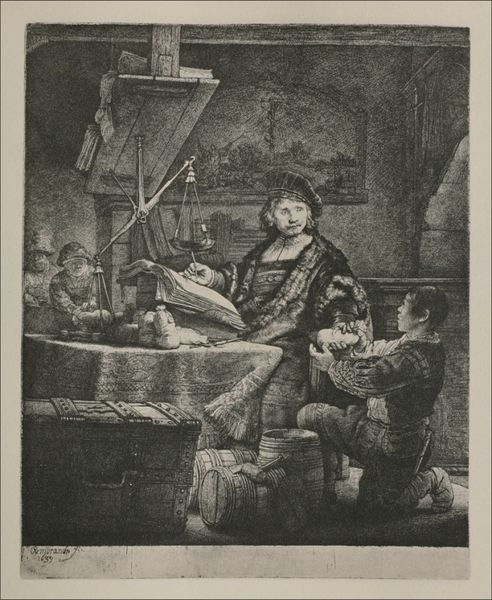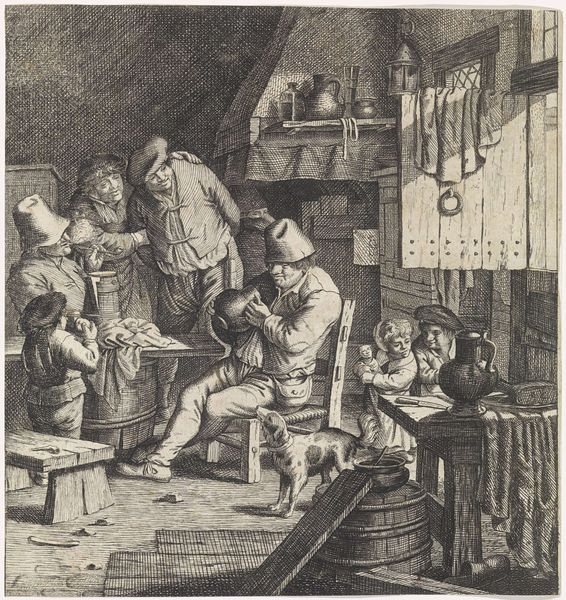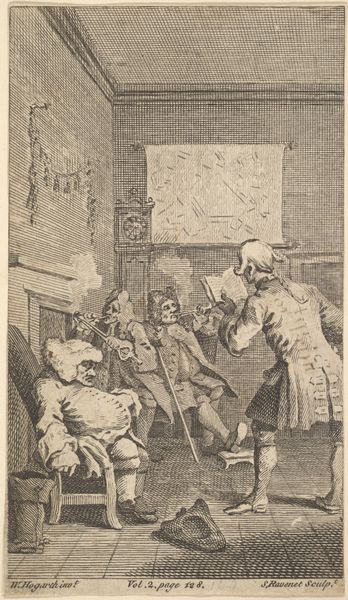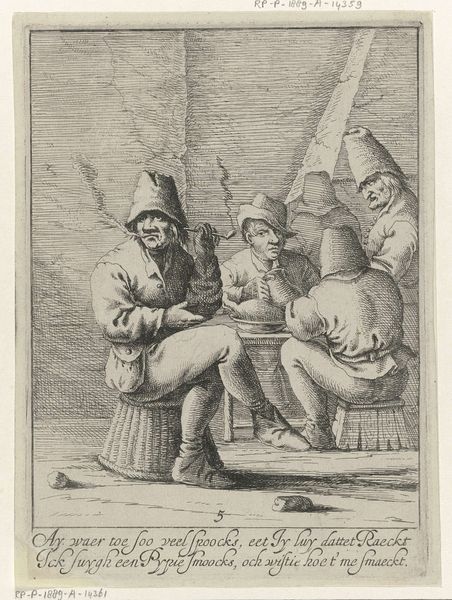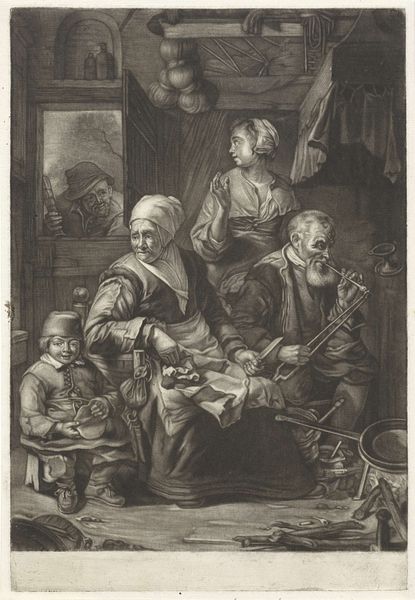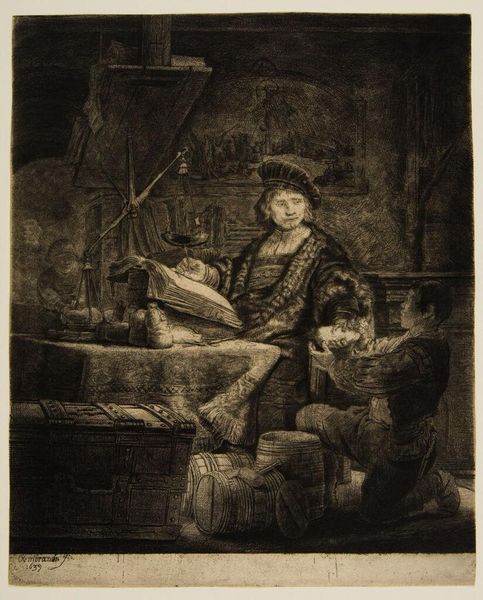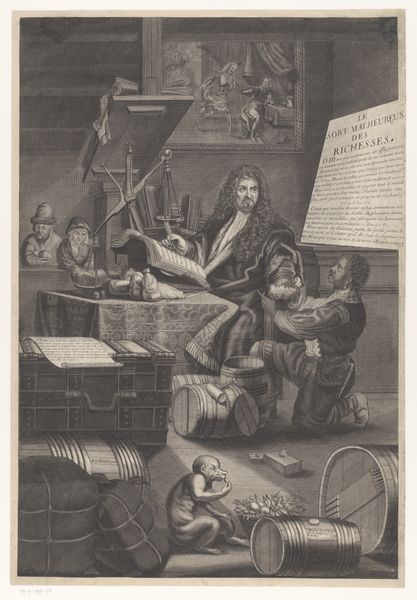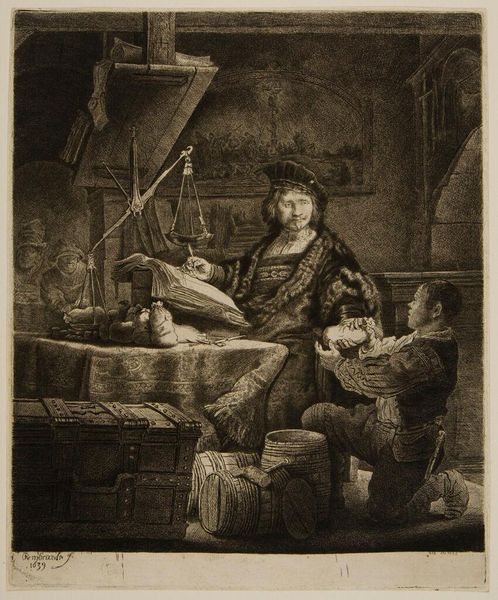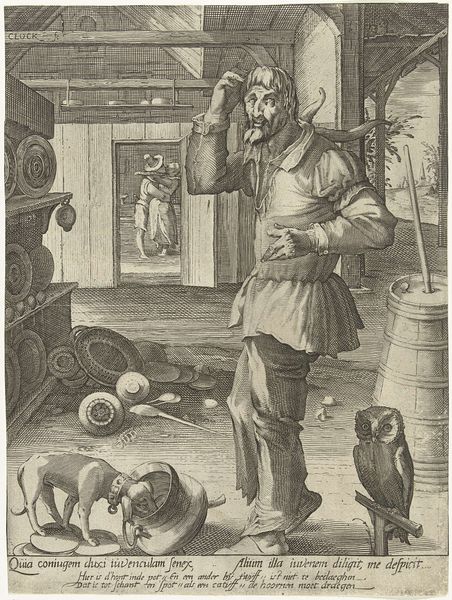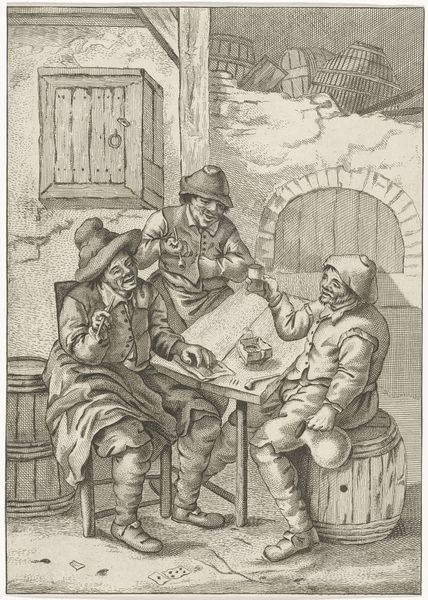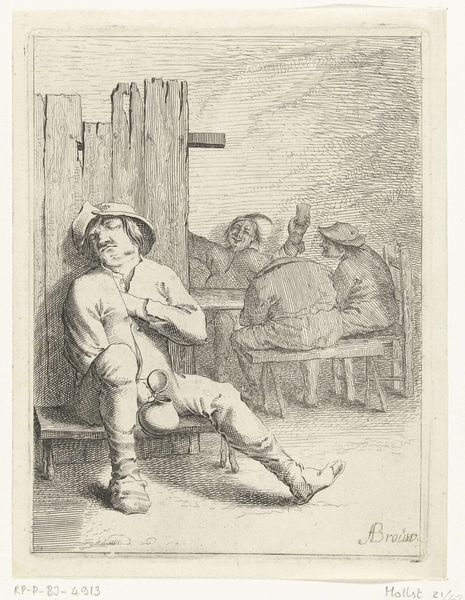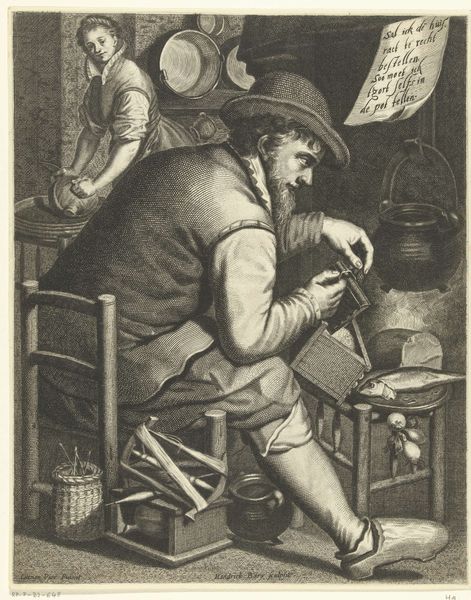
print, etching
#
portrait
#
narrative-art
#
dutch-golden-age
# print
#
etching
#
figuration
#
genre-painting
#
realism
Dimensions: height 295 mm, width 221 mm
Copyright: Rijks Museum: Open Domain
Editor: So this is Jan van der Bruggen's "Jan Wtenbogaert," created between 1690 and 1693. It's an etching, a kind of print. The scene feels pretty busy – there's a merchant, what looks like a clerk kneeling before him, and even a monkey! It’s making me wonder, what is going on here? What catches your eye in this work? Curator: It’s a fascinating print. Look at the merchant positioned centrally, almost enthroned amidst symbols of wealth and commerce: barrels, a strongbox, scales for weighing goods. How do these details contribute to a narrative of societal power during the Dutch Golden Age? The inclusion of the monkey also draws my attention. Editor: Right, the monkey feels… unexpected? Is it just a quirky detail? Curator: Not at all. In Dutch art of this period, monkeys often symbolize the folly and absurdity of human behavior. Is its presence in the merchant's workspace perhaps commenting on the ethics of trade or the potential for greed to corrupt? And, who gets to decide what’s acceptable when engaging in financial opportunities? Editor: So the artist may be questioning the morals of this merchant character or maybe even society more broadly at the time? I’d thought it was just a quirky pet! Curator: Exactly! These prints circulated widely. They weren't just decorative; they were actively participating in shaping public opinion and were meant to spark critical discourse about societal values. I’m left wondering how effective the artist's commentary really was, what do you think? Editor: That makes me see the work in a completely new light. Thinking about its public role, rather than just personal expression, shifts my understanding of art history entirely. I had not considered the potential of satire in art of the time and am very surprised! Curator: Indeed. By examining art within its historical and social context, we understand not only the work but also the society that created and consumed it. Hopefully we continue to view art through that lens, no matter what type of artwork it may be!
Comments
No comments
Be the first to comment and join the conversation on the ultimate creative platform.
